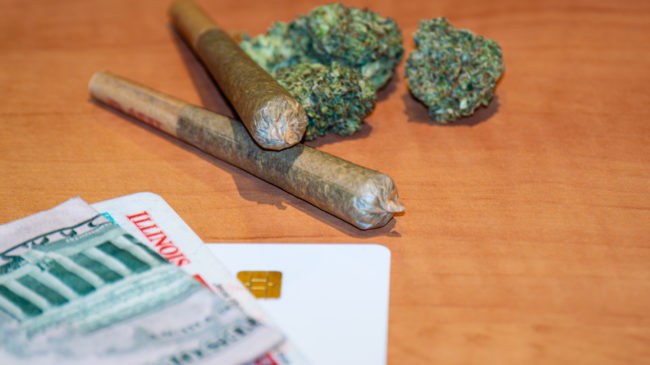Last year, the Illinois General Assembly made history by becoming the first state legislative body to craft a framework for legal, adult-use marijuana sales. Voters in several other states had passed initiatives requiring those states to license and regulate adult-use marijuana sales, but no previous state had done it through the legislature.
Unfortunately, the legislature got a few things wrong.
Moreover, because the state legislature chose to specify many details into statute rather than through rule-making, it will take additional legislative action to make the necessary corrections.
News headlines have been dominated by the massive supply shortage now gripping the legal industry. The Chicago Sun-Times just reported:
Nearly $35 million in recreational marijuana was sold across Illinois in February, marking a significant decrease from the total sold in the state’s first month of legal weed.
All told, 41 dispensaries sold 831,600 pot products last month worth $34.8 million. That’s down from the $39.2 million in sales tallied in January, when enthusiastic cannabis users bought up 972,045 products from dispensaries that quickly saw their stockpiles of pot depleted due to a pervasive supply shortage.
“If we had more consistent supply and could start lowering prices, then those numbers would go up,” Kris Krane, president of Mission dispensary in South Chicago, said Wednesday. “Supply hasn’t really gotten any better yet and I don’t really anticipate that it will in the near future.”
Reason Foundation and others warned the state was risking a shortage and other problems due to some key provisions in the original legislation. Specifically, Illinois’ regulatory framework does not allow for an adequate amount of marijuana cultivation to keep up with demand. This is compounded by a series of price controls and other unnecessary restrictions imposed on marijuana businesses.
Good old fashioned cronyism is partly to blame: As the legislation made its way through the General Assembly, existing licensees in the state’s medical marijuana program asked legislators not to open up licensing to new companies. Those growers sought to corner the market for themselves even though studies showed they couldn’t meet demand. Nevertheless, lawmakers acquiesced.
The final legislation limited the number of cultivation centers statewide to 30. Even among those 30, the size is limited. No cultivation center can operate more than 210,000 square feet of canopy space. So the maximum square footage that can ever be allowed for marijuana cultivation in Illinois is 6.3 million square feet, or about 144 total acres. This is supposed to supply a state with more than 12.6 million residents.
By comparison, much smaller states have hundreds of licensed marijuana growers. Nevada, for instance, has more than 130 licensed growers, despite a population one-fourth as large, and it imposes no limits on the size of those growers. More than 680 growers are licensed in Colorado, the state with the oldest and perhaps most vibrant marijuana market. Colorado has less than half the population of Illinois.
On top of these severe supply restrictions, there are strict rules about which dispensaries can purchase from each grower and how. For instance, no dispensary can source more than 40 percent of its inventory from a single grower. Sole-source agreements are illegal, which means every dispensary must have multiple suppliers. As consumers emptied store shelves during the weeks since legal sales began on Jan. 1, state regulators sent warning letters to dispensaries because low inventory levels have thrown off their ratios and pushed some above the 40 percent limit. Further, marijuana growers are prohibited from charging different wholesale prices to different dispensaries.
These price-fixing policies are ostensibly intended to ensure licensees don’t form a monopoly, but there are legitimate reasons a dispensary may wish to purchase its inventory from a single source. It’s cheaper and easier to deal with one supplier. Popular discount grocer Aldi, for instance, procures many of its products from a single source and passes the savings on to consumers. Likewise, growers may wish to charge higher prices in markets where there is more scarcity or to customers with a poor record of paying their bills on time.
These issues in the legislation led directly to the current shortages, which aren’t expected to go away anytime soon.
New Frontier Data, a market analytics firm for the marijuana industry, expects shortages to continue in Illinois for as long as two years. As New Frontier’s Beau Whitney says, “You fix it by issuing additional licenses. [Until then,] look for continued constraints on supply, higher-than-market prices and a robust illicit market.”
It’s great that Illinois took big steps to legalize adult-use cannabis and expunge prior convictions last year. But lawmakers need to quickly get back to work to correct the mistakes included in the original legislation and open up the market.

